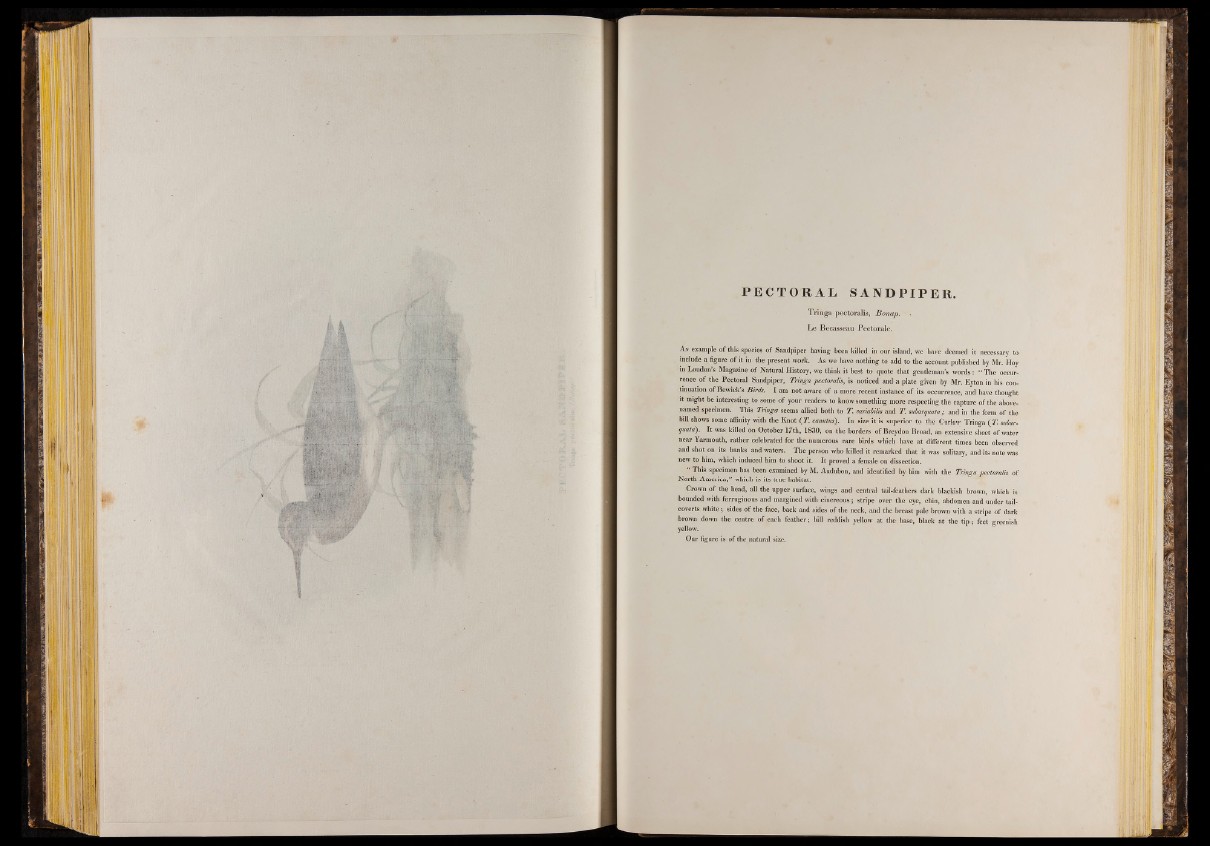
P E C T O R A L SANDP I PE R .
T r in g a pectoral is, B on ap. .
L e Becasseau Pec tora le.
An example o f this species o f Sandpiper having been killed in our island, we have deemed it necessary to
include a figure o f it in the present work. As we have nothing to add to the account published by Mr. Hoy
in Loudon’s Magazine o f Natural History, we think it best to quote that gentleman’s words: “ The occurrence
o f the Pectoral Sandpiper, Tringa pectoralis, is noticed and a plate given by Mr. Eyton in his continuation
o f Bewick’s Birds. I am not aware o f a more recent instance o f its occurrence, and have thought
it might be interesting to some o f your readers to know something more respecting the capture o f the above-
named specimen. This Tringa seems allied both to T. variabilis and T. subarqmta; and in the form o f the
bill shows some affinity with the Knot (T . canutus'). In size it is superior to the Curlew Tringa (T . subarqmta').
It was killed on October 17th, 1830, on the borders o f Breydon Broad, an extensive sheet o f water
near Yarmouth, rather celebrated for the numerous rare birds which have at different times been observed
and shot on its banks and waters. The person who killed it remarked that it was solitary, and its note was
new to him, which induced him to shoot it. It proved a female on dissection.
“ This specimen has been examined by M. Audubon, and identified by him with the Tringa pectoralis of
North America,” which is its true habitat.
Crown o f the head, all the upper surface, wings and central tail-feathers dark blackish brown, which is
bounded with ferruginous and margined with cinereous; stripe over the eye, chin, abdomen and under tail-
coverts white; sides o f the face, back and sides o f the neck, and the breast pale brown with a stripe o f dark
brown down the centre o f each feather; bill reddish yellow at the base, black at the t ip ; feet greenish
yellow.